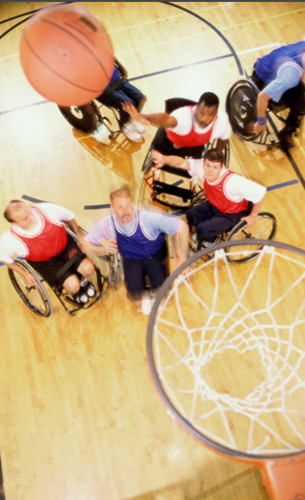Physical Activity:
Putting Play Back In Your Life
You probably called it “play time” or “fun” when you were younger.
Physical activity is one of the most important things you can do for your health. Getting in shape may be a challenge, but it pays off with more energy, more fun, and better health.

Find a type of physical activity that’s fun for you. Exercise is something you need to do for the rest of your life, so it’s essential to find activities you really enjoy. Try walking, swimming, bicycling, skiing, skating, dancing, basketball, volleyball, or any activity that sounds enjoyable to you.
Even if you’re not “exercising,” try to be more active. Do housework, gardening, hobbies or projects. Climb stairs instead of using elevators. Walk to the corner store instead of driving. Only watch television if there is a program you really want to watch—and be more active (work on a hobby or exercise) while you’re watching the show. Try to limit TV watching to no more than 2 hours a day.
Start gradually. Begin with what’s comfortable, even if it’s only five minutes. Add two minutes a week until you work up to a desirable level. Don’t exercise to the point of pain. If you feel any chest or heart pains, check with your doctor before resuming exercise.
Physical Activity Recommendations
In 2018, the U.S. Department of Health and Human Services released an updated guide on physical activity and published the Physical Activity Guidelines for Americans, 2nd edition. Here is a summary of the updated guidelines:
- Preschool-aged children (ages 3 through 5 years) should be active throughout the day. Children this age should be encouraged to engage in active play (light, moderate, or vigorous intensity) for at least three hours per day.
- Children and adolescents (ages 6 through 17) should do one hour or more of physical activity every day. Most of the time should be either moderate or vigorous physical activity. Physical activity should include aerobic, muscle-and-bone-strengthening activity at least three days a week.

- Adults, age 18-64, should do at least two hours and 30 minutes of moderate physical activity or one hour and 15 minutes of vigorous intensity aerobic physical activity a week. This aerobic activity should be performed in episodes of at least 20 minutes each, preferably spread throughout the week. Additional health benefits are provided by increasing time up to five hours a week. Adults should also do muscle-strengthening activities that involve all the major muscle groups on two or more days a week. For weight loss, longer duration sessions are essential — 30 to 60 minutes a day at least five days a week.
- Older adults (age 65 or older), should do multi-component physical activity that includes balance training as well as aerobic and muscle-strengthening activities, and follow the adult guidelines to the extent that their abilities allow. Physical activity also lowers the risk of falls and injuries from falls.

- Adults with disabilities should also follow the adult guidelines to the extent possible. If this is not possible, they should be as physically active as their abilities allow. Children with disabilities should work with their health care providers to identify the types and amounts of physical activity appropriate for them.
- Pregnant and postpartum women should get two hours and 30 minutes of moderate-intensity aerobic activity a week. This activity should be spread out throughout the week. Women who regularly engage in vigorous-intensity physical activity can continue into pregnancy provided their condition does not change and they talk to their health care provider about their activity level throughout their pregnancies. Physical activity also reduces the risk of postpartum depression.
The Physical Activity Guidelines for Americans can be downloaded here.
Download the executive summary about the 2018 guidelines from the CDC.
Additional Links
- The Division of Public Health (DPH) promotes healthy eating and physical activity through a Healthy Lifestyles campaign, which links unhealthy eating and lack of exercise to chronic illnesses and disease, like cancer, heart disease, diabetes, and obesity. The campaign encourages Delawareans to make better choices to reduce the risk of these chronic diseases, and improve overall health. Visit the Healthy Delaware website for more information.
- Current data on physical activity and obesity in Delaware is available on our Behavioral Risk Factor Survey (BRFS) page.
- 2014 Report on Physical Activity presents state-level informtion on physical activity behaviors and on environmental and policy supports for physical activity.
- Information about bicycling in Delaware is available on the Delaware Bicycle Council website.
![]() Please note: Some of the files available on this page are in Adobe PDF format which requires Adobe Acrobat Reader. A free copy of Adobe Acrobat Reader can be downloaded directly from Adobe . If you are using an assistive technology unable to read Adobe PDF, please either view the corresponding text only version (if available) or visit Adobe’s Accessibility Tools page.
Please note: Some of the files available on this page are in Adobe PDF format which requires Adobe Acrobat Reader. A free copy of Adobe Acrobat Reader can be downloaded directly from Adobe . If you are using an assistive technology unable to read Adobe PDF, please either view the corresponding text only version (if available) or visit Adobe’s Accessibility Tools page.



